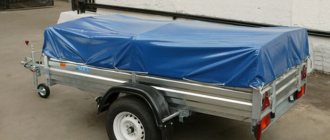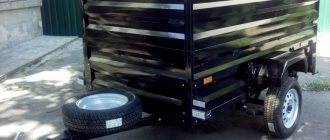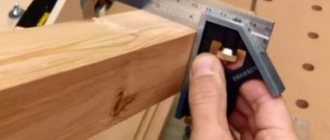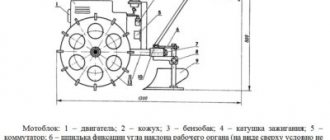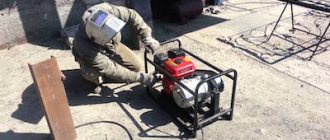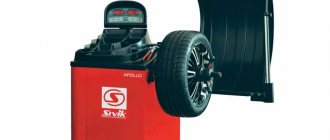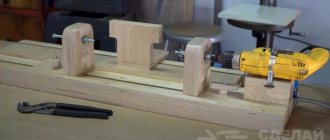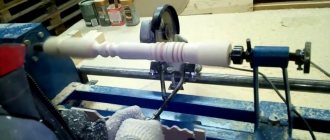And they have also proven themselves:
- Eurotrailer LLC model 711914-ATHOS, tilting backwards with a load capacity of 2 tons. Equipped with an electric jack and a 1.5 m awning. Involves the installation of a mesh superstructure.
LLC "Trailer" model 829450 with a carrying capacity of 0.48 tons, body dimensions - 3x1.5 m. Equipped with a low or high awning and a hydraulic jack.
Comparison with conventional flatbed trailers
Why is a dump trailer for a passenger car more profitable:
- A dump truck trailer for a passenger car is suitable for transporting bulk substances: sand, gravel or soil, since its design allows you to instantly unload large volumes. Dump trailers for passenger cars are excellent where it is necessary to transport crops: grain, root crops; boards, earth, hay.
- Such trailers appeal to owners of self-propelled vehicles, since the tilting body box with a hinged tailgate ensures easy loading and unloading of motor vehicles.
- In flatbed trailers, the frame and body are one-piece, so the entire trailer tips over backwards. Inconvenience comes with danger, so unloading bulk materials from flatbed trailers is not recommended. The essence of the dump unit is a movable connection between the frame and the body.
Review of manufacturers and models
Plant of passenger car trailers "Vector".
- LAV-81011V:
Trailers manufactured by LAKER.
- Heavy Duty 400:
- Eurotrailer LLC model 711914-ATHOS, tilting backwards with a load capacity of 2 tons. Equipped with an electric jack and a 1.5 m awning. Involves the installation of a mesh superstructure.
- LLC "Trailer" model 829450 with a carrying capacity of 0.48 tons, body dimensions - 3x1.5 m. Equipped with a low or high awning and a hydraulic jack.
- Plant of passenger car trailers "Vector" model LAV 81012A - a platform with a folding ramp and spring suspension. Load capacity – 0.6 t.
- LLC Trading House "SaranskSpetsTekhnika" model SST-7132-6K - single-axle trailer with expanded functionality, load capacity -0.54 tons.
Pros and cons of a dump trailer
Advantages of tipper passenger car trailers:
- Simplified loading and unloading.
- Minimal physical effort required by a person during unloading.
- Body lifting speed control.
- Ability to work with different loads.
- The mechanism can also be installed manually.
- The trailer structure is not damaged.
Video about the Kurgan dump trailer Krepysh
As for the cons. There are almost none:
- Hydraulics consists of hydraulic cylinders and a hydraulic pump. It’s difficult to create it yourself, but a purchased sample will be affordable.
- There are also a lot of problems and troubles with hydraulics and pneumatics.
If you plan to frequently transport various cargo and equipment, but there is no desire to modernize, purchasing a trailer with a tipper mechanism is an excellent option. This choice will protect you from alterations and the creation of unnecessary problems. It will allow you to use one trailer to transport the necessary cargo and equipment.
Features and Benefits
When transporting bulk cargo on a trailer, there are no special problems with loading them. But unloading is accompanied by the need to climb into the body and start scooping everything out manually, with shovels or other devices.
In such situations, the tipping mechanism becomes a real salvation. With its help, unloading is much easier and faster.
The following advantages of such systems can be cited:
- simplify the loading and unloading process;
- minimize human physical effort;
- the speed of unloading bulk cargo can be controlled;
- suitable for working with all kinds of loads;
- an indispensable device in agriculture and in the country;
- the mechanism can be installed with your own hands;
- does not interfere with the design of the trailer.
The essence of such a trailer is that its body has a movable connection to the frame. In conventional trailers, they are solid, which is why you can at most tip the entire trailer, including the tongue and wheels, backwards. This is inconvenient and potentially dangerous. Therefore, it is strongly not recommended to unload bulk cargo using this method.
DIY reinforced trailer for a car
To transport large and bulky cargo over long distances, we are accustomed to using freight vehicles of various tonnage, and a wheelbarrow is also perfect for moving heavy loads inside a farmstead. But what if you need to transport a small cargo over a medium distance. In this case, using a wheelbarrow is inconvenient and requires significant energy expenditure, and hiring a special truck is not at all profitable. For such purposes, a trailer is perfect, the tractor for which can be a passenger car, a mini-tractor, or even a walk-behind tractor.
All this is presented in household farming, but, so to speak, in miniature. For example, even a wheelbarrow will do for transportation within the farm.
You can also hire a truck to deliver goods from afar. But when transporting heavy loads over medium distances, a wheelbarrow turns out to be unproductive and a truck unprofitable. Therefore, for my yard, I decided to make a trailer with my own hands, and such that it could be used as a tractor for a walk-behind tractor, and, if necessary, a passenger car.
How to make a dump trailer
Let's look at how to make homemade dump truck trailers for mini tractors with your own hands. If you decide to make a dump trailer, then you need to decide on the choice of lifting mechanism. There is nothing complicated here as it seems at first glance. There are 2 options for dumping the trailer: manual self-tipping and mechanical. The first can be done by welding handles to the front of the trailer. The tractor driver will lift the structure with his own hands. But you can’t do it with just one pen.
See » How to do tuning of the LTZ T-40 tractor yourself
It is necessary to make an L-shaped pin, after pulling it out the trailer will tip over itself under the force of the load. A mechanical one will be a little more difficult to do than a manual one. You can make a mechanism that lifts a trailer from different types of lifting equipment. For example, it could be a jack or an electric motor with a battery, a winch or a hydraulic system, or you can get by with an oil pump. You need to attach the mechanism to the body in the most convenient way for you.
To attach homemade trailer equipment for mini tractors to the vehicle itself, you will need to weld an extended beam and attach a towbar to its end that fits your tractor. The finishing touches are painting the structure you made, upholstering the seats, and inflating the wheels. Then you need to check how the homemade product works.
How to make a reinforced trailer for a car with your own hands
You can make such a light trailer with your own hands. To make it, you can use spare parts and parts that can be found in the garage or at a disassembly site.
The frame will be made from two spars and two traverses (front and rear crossbars). And the platform lattice is made of five crossbars, which are placed between the traverses. Crossbars and traverses relative to the side members should have small cantilever outlets. Longitudinal parts must be welded to the ends of the outlets. They will play the role of lining the frames of the trailer sides. You can weld the racks onto these parts, and the upper trims to the racks.
Trailer for a passenger car, drawings, dimensions
The spars are made of rectangular pipes 60×30 mm. All the other frame and body frame parts listed above (traverses, cross members, racks, trim) are made of square steel pipe with a cross-section of 25x25 mm.
The front and rear sides of the body are the same. They are made folding (this allows you to transport long loads on a trailer), and therefore their frames, although all made from the same 25x25 mm square pipe, are made separately from the general body frame. The platform grille on top is covered with a 2-mm duralumin sheet, forming the floor of the body, and the outside sides are sheathed with thick tin - 0.8-mm steel sheet. The floor is attached to the grille with M5 bolts with countersunk heads, and the side trim is carefully (dotted) welded to the frames and posts.
The bridge beam also has a tubular rectangular cross-section: it is welded from two identical sections of channels No. 5, inserted into one another. Two wheel axles are pre-welded at the ends of one of them. The gaps between them and the beam channels at the ends were closed with plates made of steel sheet.
The beam is connected to the frame side members by means of two springs used from the old Moskvich-412 car; 13-inch wheels are also taken from the same car. The middles of the springs are pulled to the beam by stepladders, and their ends are attached to the side members: one is put on the axis of the bracket, and the other is put on the axis of the shackle. I considered shock absorbers in the design of a simplified cargo trailer for a passenger car to be unnecessary.
With such a suspension, the distance from the ground to the platform was about 600 mm, which, as operation has shown, is quite acceptable.
The drawbar of the homemade trailer is double-beam. Made from the same rectangular pipe with a cross section of 60×30 mm as the side members. The rear ends of the drawbar beams are docked and welded to the front ends of the side members with a 200 mm overlap. The front ends of the beams converge on the body of the towbar and are also welded to it. I have it homemade, but I never go on public roads with my trailer (and there is no need for this). Technical requirements simply prohibit the use of homemade towing devices.
The home-made trailer does not have brakes; I use the tractor’s brakes to stop or slow down the speed of movement. But I installed alarm devices—tail lights with turn signals and brake lights—so that my actions would always be clear to those driving on the road.
Comparison of homemade and factory trailers
You can buy a factory semi-trailer or a dump trailer. Trailers for mini tractors are sold in all cities of Russia. It's just the price that may disappoint you. The cheapest type costs 10 thousand rubles, not to mention the design with a lifting mechanism.
Why spend money when you can make a reliable and durable trailer for your equipment with your own hands. You just have to have the materials necessary for the business and, most importantly, the desire. By the way, if you have not decided on the choice of the tractor itself, then a reliable assistant for working on agricultural land is the Belarus MTZ tractor. This brand of manufacturer differs from others in its quality and durability. The price may be higher than average, but the characteristics are not inferior to other devices.
Fig.1. Homemade dump trailer:
1 — coupling device, 2 — spare wheel, 3 — lock, 4, 7, 10 — body sides, 5 — mudguard, 6 — signal light, 8 — valve, 9 — coupler, 11 — wheel, 12 — body spar, 13 — lifting device fitting, 14 — spare wheel cradle, 15 — trailer frame, 16 — body hinge.
I bring to the attention of readers a dump trailer with a tipping body. By making one for yourself, you can get rid of problems when unloading it.
A few words about the design of the trailer.
Its frame is welded from steel pipes with a square section of 40x40 mm, the bridge is from an SZD motorized stroller, using spring-hydraulic shock absorbers of a Ural motorcycle. The bridge is attached to the frame using struts, also welded from square pipes.
Fig.2. Lifting mechanism of a homemade trailer:
(A - transport position of the body, B - position of the body during unloading): 1 - connecting hose, 2 - fitting of the lifting device, 3 - support platform, 4 - rings, 5 - pneumatic chambers, 6 - cover.
The trailer is equipped with a standard ball hitch designed to accept a ball with a diameter of 50 mm.
Fig.3. Connection diagram of pneumatic chambers:
1 - chambers, 2 - threaded pipe, 3 - nuts, 4 - washers.
The body is assembled from panels, each of which has a frame made of 30x30 mm steel corners and a 12 mm thick plywood sheathing with M6 screws and nuts. Two spars made of wooden beams with a cross section of 120x30 mm are attached to the bottom. The body is attached to the frame using a hinge, the mating parts of which are welded to the frame and screwed to the side members; in the front part there is a lock, reminiscent of a regular latch, which prevents the body from tipping over while driving.
Fig.4. Mounting diagram for the lifting device fitting:
1 - cover, 2 - pneumatic chamber, 3 - angle ring, 4 - nuts, 5 - washer, 6 - support platform, 7 - lifting device fitting, 8 - connecting hose, 9 - clamp.
Now about the main thing - the design of the lifting device. It is pneumatic, driven by the engine exhaust system. Under the bottom of the body, between the side members, there are three car cameras in a case made of durable fabric - tarpaulin or synthetic canvas, attached with M5 screws to rings made of steel angle on the bottom of the body and on the frame. All chambers are connected to each other using threaded pipes, nuts, gaskets and washers, and a fitting bent in the shape of the letter “L” is screwed to the bottom, onto which a rubber hose is pulled.
Fig.5. Homemade trailer chassis:
1 - coupling device, 2 - frame spar (steel pipe 40×40), 3 - fixing device ear, 4 - body hinge, 5 - rear strut, 6 - front strut, 7 - wheel, 8 - rear cross member, 9 - suspension torsion bar axle, 10 — front cross member, 11 — bolts, nuts and washers securing the front strut, 12 — bolts, nuts and washers securing the bridge, 13, 14 — docking clamps.
To lift the body, you need to put the second end of the hose on the exhaust pipe of the towing vehicle and “add on the gas.”
Two or three minutes - and the body will rise. To lower the body, it is enough to remove the hose from the exhaust pipe. I. Khoroshevsky A trailer is a vehicle that does not have an engine installed. It is designed to travel in conjunction with a car. Despite the apparent complexity of such a device for transporting goods, it is not difficult to make a trailer with your own hands. For successful work, you need to choose the right parts and materials, make sketches or drawings.
Transport trailers
The widespread use of semi-trailers and trailers is due to the additional convenience when transporting heavy loads. The vehicle bears only part of the load, which extends its service life. When unloading, you can save valuable time by unhooking the cart and leaving it in place, and unloading it at a convenient time. This option is convenient and is used for delivering goods between workshops of the same enterprise located at a certain distance.
All towed devices are divided into two groups:
- Special-purpose trailers allow you to take into account the needs of working with various loads, but there are quite a few universal vehicles for such work. Common types include heavy-duty semi-trailers, log trucks, panel trucks, cement trucks and other types of trailed equipment.
- General transport equipment includes flatbed, tilt and other trailers of various sizes designed for transporting heavy loads of any kind.
Varieties depending on load distribution
The designs of trailed vehicles use different steering wheel control systems in order to improve the maneuverability and speed of control of the road train.
Hitches are standard in most cases. If the trailer has an active wheel drive from the car engine, then such carriages are called active automobile trains. To drive such an active drive, a mechanical transmission is used via a coupling device or a hydraulic drive is used.
If the road train has two or more links, then the engine is located in the section at the rear. Unofficially, there is the concept of “trailer”; it is used to move cars, other equipment or oversized cargo (long or heavy).
Depending on the load distribution between the trailer and the tractor, trailers are divided into several types:
- A trailer is an independent means of transport and is connected to any vehicle using a coupling device or drawbar. A common system is the hook and loop system. With such a system, the weight of the transported cargo is transmitted through the trailer frame, which is the load-bearing frame, and the wheels are transferred to the road. The coupling of a car with a carriage is used only to create traction.
- Semi-trailers use devices with a special truck tractor, which operates using a coupling pin. The load transfers its weight to the towed supporting frame, then is distributed between the wheels of the car and the trailer itself. In this case, the hitch is used not only to create traction, but also to redistribute the load. To prevent the semi-trailer carriage from tipping over during downtime, it is equipped with folding thrust stands. A semi-trailer cannot move without a hitch to a vehicle.
- The dissolution is both a trailer and a semi-trailer and is used for transporting long loads as part of a road train formed for these purposes. In this case, the weight of the load is transferred to special-purpose cradles, which absorb the load in the front part of the tractor's horses. The back of the load presses on the horsemen of the dissolution. The load acts partly on the car and partly on the dissolution frame and its wheels. In order to properly distribute the weight when unraveling, a drawbar of variable length is provided.
Requirements for transport devices
A person who wants to independently make a transport vehicle for moving goods should study the requirements for car trailers. These standards are contained in GOST 37.001.220−1980, which is called “Trailers for passenger cars.” A selection of these requirements includes the following provisions:
- the weight of the trailer should not exceed 1.8 tons and half the weight of the main vehicle;
- the static load on the ball joint in its central part should be in the range of 25−100 KGS (kilogram-force);
- the total length of the cart should not be more than 8 meters, the width should not exceed 2 m 30 cm, and the height should be within three meters;
- the trailer should not have a ground clearance less than this characteristic of the vehicle moving it;
- for a trailer, one axle is used, but it is allowed to use two parallel ones, at a distance of no more than a meter from one another;
- the traction device and the hitch are duplicated by two firmly fixed pieces of chain or cable to insure the clutch in the event of a hinge failure;
- to secure the stop of the semi-trailer, the kit should include two wheel chocks; you can also make them yourself, or you can buy ready-made, factory-made ones;
- if body parts are located below the cargo being transported, and it poses a risk of contamination of passing vehicles, then mudguards or fenders are installed;
- the hitch and traction device must be manufactured in the factory, and this is confirmed by a special certificate;
- there must be fastenings for a plate with a number;
- in order to be able to use the on-board network of the machine, an electrical cable with an attached plug is provided and there is a diagram of the electrical equipment in the form as defined by GOST 9209–1976.
Features of using carts
Car trailers are used only in accordance with their intended purpose, as this is due to similar tires and wheels with the main vehicle, track width, and travel within certain ground clearance dimensions. The rule does not apply to heavy trucks and trailers. All breakdowns that occur during operation are similar to malfunctions of the brake system and chassis of the main machine.
In addition, the operation of the trailer is impaired due to damage to the coupling or wear of the turning device.
To delay the repair of these systems, you need to regularly inspect the trailer. Since the operation of the device is associated with constant shaking and shock due to uneven traffic on roads, it is necessary to tighten the fasteners from time to time and align the curved parts. Before operation, you need to check the serviceability of springs, brakes, lighting, tire pressure, the presence of a spare wheel, and the serviceability of side and body locks.
Towing of carts is carried out according to the rules; speeding is unacceptable, as well as sudden braking and unequal distribution of the load. Increasing the speed while driving will cause the trailer to wobble on the sides. Sharp braking causes the car and trailer to fold , and engine braking also contributes to this. Due to uneven storage of transported materials, stability is impaired and the trailer may tip over.
Device options
To get a trailer that has a lifting (tipping) mechanism at your disposal, you can go in 2 ways:
- Do it yourself. This includes building from scratch and converting a finished flatbed trailer. Making your own homemade dump trailer is, in principle, not so difficult, since many people have enough experience and skills. I will give an example of how to make some variants of mechanisms yourself. Although, if you have no experience, it is better not to take on such work;
- Buy a ready-made version from the factory. Many enterprises, including MZSA (the same MZSA 817710) and (the city of Saransk) produce products that have a tipping mechanism. This is the optimal solution for many, as you get 2 in 1. The trailer remains a standard flatbed, but additionally allows the use of a tipper function. The design meets all requirements and GOST, so there will be no problems. The same cannot be said about homemade devices.
If you are ready to use the drawings and assemble a dump trailer for a passenger car yourself, I have nothing against it. A homemade trailer, made according to all the canons and rules, can be on par with factory-made analogues.
The only question is which mechanism you will use.
In total, the following options are used for trailers:
- hydraulic;
- pneumatic;
- mechanical (manual, without hydraulics).
What should you choose? This is a good question, since each dump mechanism presented has its own nuances.
The main thing here is that the body has a movable connection with the frame. If usually they are firmly connected to each other, then a hinge connection is used here. Its mating parts are welded to the frame and screwed to the side members. A fastener is made at the front according to the principle of a conventional latch. This helps prevent the trailer from tipping over while the trailer is moving behind the car.
Before unloading, the latch is moved aside, freeing the connection between the body and the frame. It receives free movement, allowing you to unload bulk material, for example.
Factory trailers have their own design features. But the principle always comes down to ensuring that only the body (loading platform) tips over, without affecting the drawbar and wheels. It can be used as a basis for either a single-axle or a two-axle trailer.
But lifting mechanisms are different. Let's consider them separately.
Hydraulic
If you have a regular passenger trailer, then I don’t see much need for hydraulics. It's up to you though.
Hydraulic systems are widely used on trucks and tractors. The essence of such a device is that the drive is connected by a coupling and an oil line to the drive from the car itself.
The advantage of hydraulics is that it allows you to tip the trailer body in different directions and at a fairly high speed without the use of physical effort.
The main problem is the complexity of such a mechanism.
There is a good alternative though. For this purpose, a pair of hydraulic cylinders installed on the side members, as well as a hydraulic pump, are used. It’s not particularly easy to do it yourself, and buying a ready-made version is quite expensive. But if you have the money and don’t mind spending it, take it. You will not regret.
Pneumatic
Another version of the lifting mechanism is based on pneumatics. Not a bad solution for a homemade device. Although there are some peculiarities here too.
The pneumatic drive is powered by the machine's exhaust system. Car cameras are installed under the bottom of the car, enclosed in a case made of durable material. Usually a tarpaulin is used. The cover is fixed to the bottom of the body and frame using fasteners. You can take screws and make rings from a strong steel angle.
The chambers are connected with pipes, nuts, gaskets and washers, and a fitting is installed in the shape of the letter L. A durable rubber hose is pulled over it.
The essence of such a homemade mechanism is that you put the second end of this hose on the exhaust pipe and press on the gas. The chambers are filled with vehicle exhaust gas, causing them to inflate and the body to rise.
If you need to lower the trailer body, remove the hose from the exhaust and that’s it, the chambers begin to gradually deflate.
Mechanical
I agree that there are quite a lot of hassles and problems with pneumatics and hydraulics. In practice, most trailer owners make do with a conventional mechanical tipper.
Here it is also necessary that the frame and have a movable connection with each other. This will make the body partially independent and movable. There will be a manual mechanism in front, with the help of which the body tips over backwards.
Although you can do without such a mechanism. It is enough to weld a support in the front part. The body will then tip over due to its own weight when you remove the locking device. But this is only relevant when using a single-axle trailer. Biaxial due to 4 wheels, they firmly and confidently maintain balance, regardless of the connection to the car’s towbar.
The advantage is that the price of such modification is the lowest. And among factory trailers, models with a mechanical dumping device are the most affordable. And an excellent solution would be to use a winch. Convenient, simple, and physically easier.
It's up to you to decide what to choose. You can watch different videos, look at the results of modifications to conventional flatbed trailers, or study the range of well-established manufacturers.
For safety, reliability and ease of use, I would advise you to purchase a factory dump trailer. Their range is impressive, and their pricing policy is at a pleasant level. And there will be no difficulties with registration.
Since we are talking about dump trailers as vehicles for transporting bulk cargo (although you can transport whatever you need), pay attention to a few recommendations regarding proper operation.
Compliance with them will allow you to avoid unnecessary fines and not create a danger on the road for other road users.
- Bulk cargo is transported only on special trailers designed for such purposes. Another reason to buy rather than assemble it yourself;
- An awning, plastic cover or other covering is placed on top of the body;
- The absence does not allow transporting bulk cargo above the level of the edge of the side. Operation without an awning leads to the loss of cargo, its spilling onto the road and creating a danger for cars that pick you up;
- Observe the speed limit when driving with a trailer;
- Do not exceed the established trailer load capacity;
- To transport bulk cargo, the trailer must be equipped with rigid sides. Preferably galvanized.
All this is provided initially at the factory. When converting a conventional trailer, problems and difficulties sometimes arise.
The process of transporting any cargo always consists of three components: loading, delivery and unloading. Let's assume the load has already been transported to the farmer's yard. The moment of unloading comes - it usually happens here manually, rarely when it is possible to use a crane, except to remove some large weights from the vehicle.
And everything is done by hand! The work is labor-intensive, be it bulk or piece cargo. Here the question of “mechanization of the process” involuntarily arises.
I did this too. I decided to design a small “self-dumping” trailer for a tractor with a lifting capacity of 2 - 3 tons. Strange as it may seem, my eyes initially focused on... a kvass barrel. Officially, it is called the ATsPT-9 tank trailer for transporting kvass. Of course, I only considered the trailer itself, its frame, which can support a barrel of kvass with a total weight of about a ton.
As it turned out, it was created on the basis of a single-axle tractor trailer 1-PT-1.7.
With its own weight of 0.8 tons, such a trailer could transport cargo up to 1.8 tons; the installation platform - 2484x940 mm - was also quite sufficient to accommodate the trailer body I had planned. Trailer frame:
1 — front traverse (channel 100x46x5);
2 — spar (channel 140x58x5); 3 — rear beam, channel (120x52x5); 4 — scarf (corner 80x80x6); 5 — strut for hydraulic cylinder installation (channel 120x52x5); 6 - central beam (100x100x4); 7 — longitudinal amplifier (plate 100×5); 8 — drawbar, channel (120x52x5); 9 — transverse reinforcement (corner 50x50x5); 10 — reel, channel (100x45x4); 11 — stop (plate (150×20)
DIY making
In order to make a caravan yourself, you need to take care of purchasing some materials and tools. In order not to look for the necessary devices during work, they are purchased in advance. List of tools and materials:
Steel channel for frame. You should select or cut pieces that have a cross-section of 40x25 mm. You can use a square pipe with a transverse dimension of 40x40 mm. The cuts are determined by the master based on size considerations.- Sheet steel from which the sides of the trailer will be made. Its thickness should not be less than 1 mm. The dimensions of the finished pieces are calculated according to the drawing depending on the dimensions of the body.
- Plywood with a thickness of at least 16 mm to form the bottom of the body. This thickness is needed to take into account the strength when loading.
- To assemble the chassis, you can take suspension elements from common car brands. Volga, Moskvich, and Zaporozhets suspension brackets are often used; sometimes a bridge from a classic Zhiguli is used.
- The electrical elements of the equipment include direction indicators, brake lights, and marker lamps. Such assembled options can be purchased on the market in the form of ready-made kits. Sidelights from Gazelles and UAZs are often used.
- Fastening elements depend on the characteristic features of the trailer and its design. In order not to worry about the strength of the finished product on the road, you should not skimp on such connecting elements.
- Craftsman's tool for making the trailer itself. These tools should provide a minimum list of work. This includes an electric drill, grinder, pliers, a set of wrenches, and a jigsaw. Each master can add something to this list for convenience.
- A machine for welding metal, which you should have the skills to operate, or you should invite a specialist.
Beginning of work
Assembly begins with the trailer frame, which is the supporting structure. It bears the bulk of the weight of the cargo. It is subject to increased requirements for reliability and strength. The prepared channel or square pipe is cut to size according to the drawing, two long and two short blanks are made.
They are used to make a rectangular or square base in the form of a frame, to which sides from a metal sheet will subsequently be attached. Pay attention to the quality of welding, since this is a sore spot for homemade trailers. The hitch is attached in front of the manufactured frame. To install shock absorbers, special eyes are placed in the middle of the frame.
Now it's time to make the side frame. To attach the side railing, vertical posts are strengthened; their length depends on the height of the side. The vertical elements are connected to each other by additional stiffening ribs, since during movement it is the racks that experience the load from the displacement of the load. Additional strengthening connections are made horizontal, vertical or placed obliquely.
Working with the chassis of a trailer is associated with a large number of difficulties and has different features. One of them is that the axle should be located closer to the rear of the trailer. All design features arise depending on which vehicle chassis is used for the trailer. Shock-absorbing lugs and mounts for reaction rods are welded to the frame. Installation and use of the latter are mandatory, since they play the role of elements supporting the bridge.
Final phase
Sheathing the sides with metal and making the bottom of the trailer from plywood is done at the final stage of assembly.
A jigsaw is used to cut plywood to fit the internal space, and sheet steel is cut with a grinder. The bottom elements can be made from a single sheet or connected from pieces with an overlap of at least 5 cm. All pieces must be attached around the perimeter to the frame and base elements using bolted connections. The sides are cut to dimensions that are measured on site. At this stage, it is not relevant to use the dimensions from the drawings, since during the manufacturing process the dimensions of the body frame, as a rule, differ slightly from those provided in the diagrams. Welding or rivets are used as fastening, which also hold the material well. The sides are attached to all racks and strengthening connections.
Electrical equipment
Elements of electrical equipment are installed on the rear wall of the trailer.
These include red triangular reflectors, a reversing light, license plate lights, turn signals, brake lights, and side lights. On the wall in the front there are white dimensions and the same reflectors. The side walls are designed for orange reflectors. To ensure that the wires maintain their integrity, a protective corrugation is put on them. Wire connections must be secure and well secured. It is convenient to attach the corrugation with wiring inside to the frame frame using plastic clamps.
Making a trailer requires skill and experience with power tools, but it will save money compared to buying a ready-made vehicle from a store.
DIY car trailer: step-by-step instructions
Transporting large loads is a fairly common necessity in the lives of many motorists. As practice shows, the trunk of a car is most often not very suitable. The ideal solution in this case would be to use a car trailer. It is worth noting that a car trailer is quite relevant not only for domestic needs, but is also actively used by car travelers.
Requirements for a car trailer according to GOST
The first thing a person who has decided to independently manufacture a car trailer needs to know is that it, like any vehicle, has certain requirements. In this case, all requirements are described in detail in GOST 37.001.220-80, which is called “Trailers for passenger cars.” In order not to burden car enthusiasts with reading the primary source, it is worth making a selection of relevant information specifically on the issue under discussion.
So, a car trailer must meet the following requirements:
- The weight of a passenger car trailer should not exceed 1.8 tons. However, it should also not exceed half the weight of the towing vehicle.
- The static load indicator on the central part of the ball joint of the coupling device should be from 25 KGS to 100 KGS.
- The total length of the trailer cannot exceed eight meters, the width cannot be more than two hundred and thirty centimeters, and the height limit is three meters.
- The ground clearance of the trailer should not be less than the vehicle towing it.
- For a passenger car trailer, it is intended to use one axle. A possible option is two parallel axes located at a distance of no more than one meter from each other.
- For insurance purposes, the towing coupling device is equipped with two non-removable sections of cable or chain, which insure the structure if the coupling becomes disconnected as a result of a hinge failure.
- The mandatory equipment of the trailer being used must include wheel chocks. It is stipulated that they do not have to be factory-made.
- The design must include fenders and mudguards if body parts do not perform this function.
- The towbar must be of factory origin and have an appropriate certificate.
- Fastenings must be provided to secure the license plate.
- To connect to the vehicle's on-board network, a cable with a plug must be provided; the electrical circuit diagram is regulated by GOST 9209-76.
Required tools and materials
So, before you start assembling the desired structure, it is worth preparing a number of tools and materials that will be required at various stages of assembly.
- Steel channel for the frame. The optimal channel size for assembling a car trailer frame is 25x40 mm. It is also possible to use a square pipe with dimensions 40x40 mm. The length of the material is selected individually based on the design features.
- Sheet steel for body sides. The thickness of the sheet steel from which the body sides will be made should be about 1 mm. The dimensions of the required sheets should also be calculated based on the dimensions of the finished structure.
- Thick plywood. The bottom is made from it, therefore, the thickness should be chosen with a margin for sufficient strength.
- Chassis. Everything here relies only on the imagination of enthusiasts. For example, the use of suspension elements for Moskvich, Volga, ZAZ, etc. cars is quite popular. Attempts are often made to build a trailer on the classic “Zhiguli” bridge.
- Elements of electrical equipment. Wiring, brake lights, direction indicators, dimensions. Nowadays there are often ready-made solutions specifically for car trailers on the market. In this case, rear lights from onboard UAZs and Gazelles are often used.
- Fastening elements. It all depends on the design features. It is worth noting that in order to increase strength, you should not skimp on bolted connections.
- Hand tool. The minimum set of hand tools includes the following. Hammer, pliers, wrenches, drill, jigsaw and grinder. Depending on the design features of the trailer, the tool can either be replenished or reduced.
- Welding machine. Actually, the element, without which assembling the trailer will simply be impossible, you will also need to find either an experienced welder or have the necessary skills yourself.
Step-by-step instructions for making a homemade trailer
Once the entire set of materials and tools has been assembled, you can proceed directly to assembling the structure.
The instructions will allow you to do everything quickly and efficiently.
- The first thing the trailer assembly begins with is the frame; in fact, it acts as the load-bearing part of the structure. Accordingly, it is subject to special requirements for strength and reliability. To begin with, the channel or pipe is cut into pieces of the required length, after which a rectangular or square base is welded from them, to which the sides will be attached. Particular attention should be paid to the quality of welding seams, since it is at this point that, as a rule, the main problems arise in home-made structures. The coupling device is mounted in the front part of the frame, and eyes for shock absorbers are installed in the middle.
- Body assembly begins with the frame of the sides. Vertical posts are installed first, then horizontal ones. It is separately recommended to strengthen the sides with additional stiffening ribs, since during movement, especially on bad roads, the elements may experience high loads. Additional stiffeners can be either vertical or horizontal.
- Installation of trailer chassis. This process has a lot of subtleties. For example, the axle should be moved closer to the rear of the trailer. In general, any peculiarities in the installation of the chassis are caused rather by the design features of the elements that the car owner chose to test. Eyelets for shock absorbers and reaction rods are welded to the frame; it is unacceptable to neglect the latter, since they serve as retaining elements of the bridge.
- Sheathing of the sides and bottom is carried out at the final stages. Sheet steel and plywood are excellent for this. First of all, the bottom sheathing elements are cut out with a jigsaw, and they are secured using bolts. Next, the side cladding is made from sheet steel. It is noteworthy that it can be secured either by welding, for example, or using aluminum rivets, which are quite affordable for purchase.
- Installation of electrical equipment. The following should be installed on the rear wall of the trailer: red reflective triangles, license plate lights, reversing lights, brake lights, direction indicators and clearance lights. There should be orange reflectors on the side. The front wall provides for the installation of white markers and reflectors of the same color. It will be much more effective to use ready-made wiring solutions. Be sure to use a protective corrugation for the wires. All connections must be tight and reliable. It is most convenient to attach the wiring harness to the frame using special plastic clamps.
Tool for making a homemade trailer
To make homemade products, designers primarily use welding; there are motorists who only use it. Using gas welding, you can not only weld structural parts, but also cut pieces of metal of the required size with a cutter.
Even when assembling a homemade structure, the following is often used:
- angle grinder (grinder);
- automotive tools (spanners and socket wrenches, sockets with wrenches and extensions).
Having drawn up a drawing, the DIYers first begin to manufacture the frame. To assemble it, a steel channel is very often used, so that the metal can withstand loads well; its cross-section must be at least 25x50 mm. Also, the frame is often made of a metal pipe, but it is more convenient to work with a channel.
The rolled metal is first cut to the dimensions specified in the drawing, then the sections of the channel profile are welded together. After welding the main body, the frame should be reinforced with additional stiffeners, otherwise the structure will be unreliable.
If you plan to create a trailer on springs, brackets should be welded to the frame. The springs will be attached to the frame base with bolts and nuts, and the axle and springs will be connected using stepladders. The brackets are welded with a slight offset to the rear of the structure, this ensures the greatest stability of the homemade trailer.
Next, a drawbar should be welded to the frame, and a towbar should be mounted at its end. If the connection point between the trailer and the car is made too long, driving the trailer will not be very convenient, and it will be especially difficult to maneuver in reverse. The drawbar must be welded strictly in the center, otherwise the trailer will pull to the side. Even for a single-axle design, it is necessary to distribute the weight so that the main load of the empty AP falls approximately on the bogies; the heavier the carts, the force on the coupling device will increase, and it will be under constant tension.
A part of the coupling device is installed at the end of the connecting unit; the tow bar can be rigidly attached to the drawbar by welding, or with bolts and nuts.
Next you should work on the body; the easiest way is to make it from plywood or wood. The plywood floor is screwed to the base with bolts and nuts; the sides are better made of a more durable material - wood or sheet iron. It would also be a good idea to cover the floor with sheets of iron; plywood can quickly become scratched and become unusable.
But the assembly of the trailer does not end there; it is still necessary to install the rear lights and connect the wiring. Two-axle trailers are often equipped with brakes; the braking system makes driving the vehicle easier. It is especially important to install brakes on a trailer for transporting heavy loads weighing more than 1400 kg.
An AP is often necessary for transporting bulk cargo - river sand, gravel or crushed stone. Unloading construction materials from a regular body is inconvenient - unloading takes a lot of time. You can make the task easier by installing a dump-type body on the trailer, with a reverse tipping mechanism.
The frame and axle in this design have a movable connection, and a manual body lifting mechanism is installed in front.
You don’t have to install the mechanism, but then you need to weld a support in front. In this option, the body will tip backwards under its own weight when the locking device is removed.
For a homemade dump truck trailer, it is important that its sides tip over.
To connect the trailer to the car body, you need to install a tow bar on the car. A towbar for a car consists of parts:
- hinge with hook;
- power beam;
- sockets for connecting wires.
The industry produces towbars of various designs; there are trailer hitches in which the hook is welded to the beam, and together with the hinge it represents a single, monolithic structure. But more often hinges are produced with a removable hook, and this version of the device has the advantage that in case of damage to the coupling joint or wear of the ball, the coupling can always be replaced.
There are also trailer hitch systems where the ball can be removed from the hook and replaced separately. Many towbars are equipped with a safety device that prevents complete loss of connection between the car and the trailer; it is necessary for safety.
